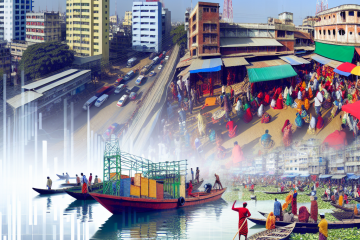Bangladesh Economy Daily Brief (5 pm Dhaka)
– Policy and inflation: Bangladesh Bank unveiled a tighter monetary policy stance for H1 FY26, saying it will not pivot until inflation is brought below 7%. Headline inflation eased slightly to 9.92% in September, but remains well above target. Business groups pressed for single-digit lending rates; the governor signalled support for growth once price pressures cool.
– External support: Dhaka is seeking around $3 billion in additional IMF budgetary support, with the Fund indicating openness to increase assistance. The World Bank, meanwhile, said Bangladesh’s overall debt remains manageable and noted a rebound in activity in the second half of FY25.
– Reserves and trade: Foreign exchange reserves have crossed $32 billion. Import demand remains soft, with LC openings declining in the first two months of FY25, reflecting tight FX/liquidity conditions. RMG exports grew 4.79% year-on-year in July–September (FY26 Q1), while the September PMI signalled a faster expansion in manufacturing.
– Banking and liquidity: Banks reopened to heavy customer traffic, with long queues for cash withdrawals and utility bill payments, underscoring persistent liquidity and transaction bottlenecks.
– Debt dynamics: External debt has increased by about $80 billion over the past 15 years, highlighting the need to balance development financing with export and revenue growth.
– Investment and development: Germany flagged Bangladesh as a promising investment destination. The ADB approved $100 million to support job creation through small enterprises in rural areas.
What to watch: How quickly inflation can move toward 7% to unlock policy easing; the scale and timing of additional IMF support; whether import LCs stabilise alongside reserves; and whether the recent export and PMI momentum holds into Q2.


